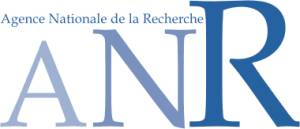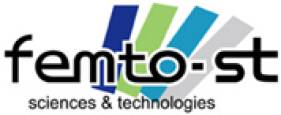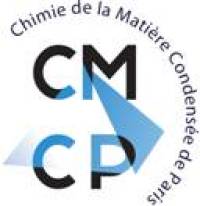Bienvenue sur le dokuwiki du projet ANR ORA (Optical Resonators and Applications)
Partenaires du projet ORA
Publications
Articles
Adiabatic self-focusing in media with spatially variable nonlinearity
Coupling active microresonators improves the characteristics of slow-light systems
50 GHz to 60 GHz local oscillator transmission over fiber using optical frequency multiplication
Estimation of the uncertainty for a phase noise optoelectronic metrology system
High intensity behavior of pyroelectric photorefractive self-focusing in LiNbO3
Coupling of high-quality-factor optical resonators
Optical Scattering Induced Noise in Fiber Ring Resonators and Optoelectronic Oscillators
Analytical model for the coupling constant of a directional coupler in terms of slab waveguides
High quality factor optical resonators
Congrès internationaux
Transient effects in high-Q whispering gallery mode resonators: Modelling and applications
Millimeter Wave Generation Using Brillouin Scattering in a High Q Fiber Ring Resonator
Investigations on Noise Processes in Optical Resonator Based Microwave Oscillators
Optoectronic phase noise measurement system with wideband analysis
Laser stabilized by acousto-optic cells for optoelectronic oscillators
Uncertainty Calculation for Phase Noise Optoelectronic Metrology Systems
Experimental study of a crystalline-resonator based optoelectronic oscillator
Modern approach for estimating uncertainty of a precision optoelectronic phase noise measurement
Experimental characterization of optoelectronic oscillators based on optical mini-resonators
Fiber ring resonators with Q factors in excess of 10^10 for time and frequency applications
Nonlinear dynamics of optoeletronic oscillators based on whispering-gallery mode resonators
Comparison of two methods of laser stabilization for optoelectronic oscillators
International Workshop Silicon & Photonics June 11-12, 2013 (Rennes, France)
International Workshop Silicon & Photonics June 11-12, 2013 (Rennes, France)
Chapitres d'ouvrage
Congrès nationaux
Journée du Club Optique micro-ondes 20 juin 2013
Journées Nationales en Nanosciences et Nanotechnologies 2013
Oscillateur optoélectronique à base de résonateurs à modes de galerie à très fort facteur de qualité
Résonateurs optiques à modes de galerie appliqués aux oscillateurs et aux peignes de fréquences
Présentation
Résumé
Le projet ORA fait suite au programme ANR O2E n° NT05-3_45032. Les sources micro-ondes à très faible bruit de phase sont nécessaires pour de nombreuses applications telles que les radars à très haute sensibilité, les transmissions des ondes millimétriques ou l’instrumentation. La distribution des signaux micro-ondes est limitée par les pertes des lignes de transmission (guides d’ondes électriques au sens large). La très grande passante et les faibles pertes des systèmes fibrés optiques peuvent être utilisées pour contourner ce problème. Dans ce contexte, la génération de micro-ondes sur porteuse optique est d’un grand intérêt. Le projet propose d’utiliser des micro-résonateurs à modes de galerie pour atteindre ce but. Les microcavités optiques à très haut facteur de qualité sont d’un grand intérêt pour des applications dans des domaines aussi différents que l’optoélectronique, la métrologie ou la physique fondamentale. Ils sont utilisés par exemple pour : le filtrage optique, la commutation tout-optique, optique non-linéaire à bas seuil, les sources laser de grande pureté spectrale, les mémoires optiques, les biocapteurs, l’électrodynamique quantique.
Dans le projet ORA, nous proposons d’étudier théoriquement et expérimentalement la réalisation de lignes à retard optiques compactes passives ou actives. Nous étudierons aussi la capacité de ces composants à générer directement un signal RF par utilisation de non-linéarité du troisième ordre et/ou des résonateurs actifs dopés Erbium. Après les tests d’évaluation pratiqués dans ce projet, nous pensons que nous serons capables d’intégrer ces composants passifs ou actifs dans des Oscillateurs Opto-Electroniques (OOEs) et à titre préliminaire dans des biocapteurs. Le programme présente deux aspects complémentaires :
(i) les micro-résonateurs et leurs systèmes de couplage
(ii) les applications et leurs tests de qualification.
En premier lieu, le but est d’améliorer théoriquement et expérimentalement le point (i). En s’appuyant sur la modélisation et des simulations, les résonateurs et les coupleurs d’insertion extraction seront dessinés, fabriqués et les assemblages résultant seront testés par trois méthodes bien établies dans le programme ANR précédent (méthodes de scan, balayage rapide en fréquence et une méthode dérivée de la spectroscopie RF).
En parallèle aux travaux sur les micro-résonateurs passifs (verres ou monocristaux), nous travaillerons sur les lignes à retard actives contrôlées par le gain optique dans le cadre de l’amplification sélective dans des résonateurs à modes de galerie dopés Erbium en matériaux vitreux ou céramique. En conclusion de la précédente ANR nous avions vu que le choix des matériaux optiques était déterminant pour obtenir de très hauts facteurs de qualité. Une tâche sera spécifiquement consacrée dans le projet de manière à développer des matériaux de très haute pureté ainsi que de nouveaux matériaux dédiés à des travaux plus prospectifs. La partie dédiée aux résonateurs passifs (dans la suite du programme O2E) permettra d’améliorer nos connaissances et ce type d’oscillateurs. La partie basée sur l’amplification sélective et/ou l’utilisation d’effets non-linéaires aura pour conséquence d’étudier et de développer de nouvelles topologies et architectures ainsi que d’envisager une montée vers de plus hautes fréquences micro-ondes.
Toujours basée sur l’utilisation de résonateurs dopés Erbium, nous caractériserons (pureté spectrale, stabilité, accordabilité, bruit…) l’émission simultanée à deux longueurs d’ondes d’un laser micro-sphérique. Une tâche sera dédiée à ce composant et à son intégration dans un nouveau type d’OOE. Les thèmes d’applications abordés dans le projet se déclinent comme : « Source de ultra haute pureté spectrale et haute stabilité », « Résonateurs pour les ondes millimétriques et applications THz », « Résonateurs à très haut facteur de qualité et applications aux capteurs ».
Abstract
This project takes place in the following of a previous ANR O2E n° NT05-3_45032 project.
A low phase noise microwave signal is required for many applications such as in high sensitivity radar, long-range transmission of millimeter-waves or instrumentation. The distribution of microwave signals is strongly limited due to the high losses of electrical lines. The broad bandwidth and very low loss fiber systems can be used to circumvent this issue. In this context the generation of optically carried microwaves is of great interest. The project deals with the use of whispering gallery mode to reach this issue. Optical high quality factor (Q) micro-cavities are of great interest for applications in different fields such as optoelectronics, metrology or fundamental physics. They can be used for instance for: optical filtering, all-optical switching, low threshold non-linear optics], narrow linewidth laser applications, all-optical buffering, bio-sensing and quantum information processing or cavity quantum electrodynamics.
In the ORA project, we propose to investigate theoretically and experimentally the realization of passive or active compact optical delay lines based on whispering gallery mode resonators as well as to study the capability of these devices to directly generate RF signal by use of third order nonlinear and/or active (Erbium doped) resonators. After the evaluation tests we will perform during the experiments planned in the current research proposal, we think we will be able to introduce these passive or active components in OEOs and in a first approach of bio-sensor systems. The research proposal presents two complementary aspects:
(i) Micro-resonators and associated input/output coupler(s).
(ii) Applications and their qualification tests.
In first hand, the goal is to improve theoretically and experimentally the problem of the coupling between a high-Q resonator and its external coupler. Based on modelling and simulations, the resonators and couplers will be designed, fabricated and the resulting assemblies tested by three methods well established in the previous ANR program (slow and fast frequency sweeping methods and the third derived from RF spectroscopy).
In second hand, in parallel to the works on passive (glass or mono-crystalline) micro-resonators, we will work on active optical delay line controlled by the gain based on selective amplification in Erbium doped whispering Gallery Mode resonators fabricated in glass or ceramic materials. As conclusion of the previous ANR program we have seen how the choice of the optical material is determinant to obtain a high-Q factor resonator. This task will be specifically addressed in this proposal in order to develop high purity materials as well as new materials dedicated to the fundamental and application works. The first application will be in the following of the ANR O2E program. In this program, the results were obtained with architecture for the OEOs not very different from those studied at the JPL. The part dedicated to passive resonators will induce better knowledge and will lead to improve such kind of oscillators.
The part based on selective amplification and/or nonlinearity will have as effect to develop and to study new architectures as well as generation of RF signal at higher frequency. Always based on Erbium doped resonators we will check all the characteristics (purity, stability, tenability, noise…) of a dual wavelength simultaneous emission laser source. One task will be devoted to this new component and its integration in a new topology of OEO. The applications will be declined as: “Ultra high spectral purity and high stability sources (time and frequency or radar applications)” “Resonators for millimeter wave and THz applications” “Ultra high Q resonators and systems for sensors applications”.
Vous n'avez pas les droits pour ajouter une page





